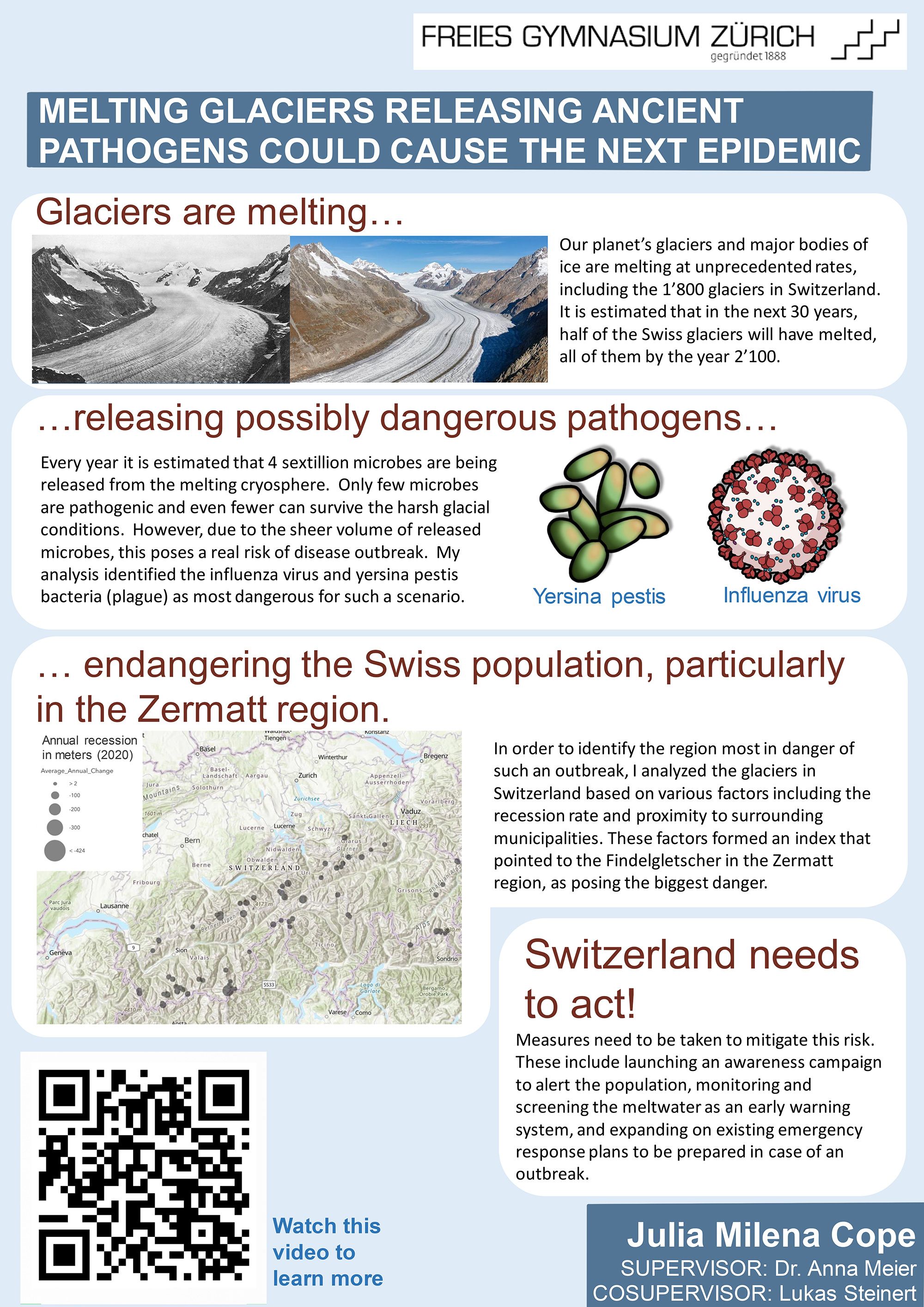Autor/-in:
Cope Julia Milena
Melting Glaciers Releasing Ancient Pathogens Could Cause the Next Epidemic
Risk mapping and mitigation strategies for Switzerland
Anna Meier
Lukas Steinert
Freies Gymnasium Zürich
Fach: Geographie und Biologie
Abstract
What if the next epidemic came not from a new pathogen, but an ancient one? In my matura project I explore an until now little discussed danger posed by climate change: the melting cryosphere. Research in this field is in its infancy, however it is estimated that every year 4 sextillion microbes are being released as ice melts across the world. Switzerland is home to approximately 1’800 glaciers. It is estimated that by the end of the century there will be no glaciers left. My paper analyzes the possibility of disease-causing microbes being released from melting glacial ice in Switzerland, and defines potential mitigation strategies.
The paper studies the pathogens deemed “most dangerous to public health” (Janik et al., 2020) and evaluates their ability to live in the harsh conditions of glacial ice. Through mapping glacial recession patterns (GLAMOS, 2020) and municipality population (Esri Suisse, 2021) the Findelgletscher in Zermatt was identified as posing the highest danger.
To mitigate the effects of an outbreak I formulated a set of actions that should be taken in Switzerland, including raising awareness for the general public and in affected communities, preventing outbreaks through monitoring and screening strategies and preparing an emergency response.

